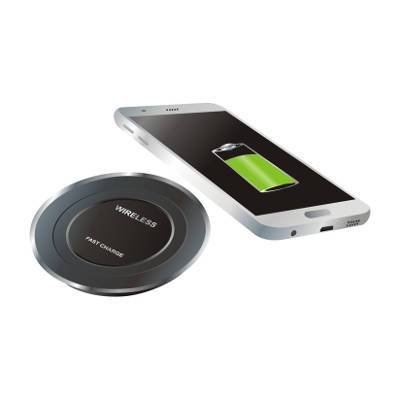Mobile devices have become invavluable in the modern workplace. It'd be difficult to locate a company that doesn’t use smartphones or tablets in some manner. However, mobile devices will never be truly mobile while they need to be tethered to wires plugged into outlets or USB cables due to batteries losing their charges. An innovation called wireless charging has attempted to shake this concept up, but has it proven successful? And what is wireless charging, exactly?
Macro Systems Blog
Computers used to be great hulking pieces of machinery that were difficult to move. These days, however, mobility is a major contributing factor when buying a new device. Today’s smartphones are more powerful than computers built a decade ago, so it’s no surprise that organizations are prioritizing in mobility.
 In the modern business landscape, WiFi is more important than ever before. In recent years, the capabilities of WiFi technology have improved dramatically, prompting more businesses to utilize wireless technology. An increased dependency on WiFi means that a working wireless connection is critical to operations. This requires knowing how to both properly setup and maintain your wireless network.
In the modern business landscape, WiFi is more important than ever before. In recent years, the capabilities of WiFi technology have improved dramatically, prompting more businesses to utilize wireless technology. An increased dependency on WiFi means that a working wireless connection is critical to operations. This requires knowing how to both properly setup and maintain your wireless network.
 In a digital age where nothing seems to be private or secure, no matter what steps you take, comes hope with a technology called LiFi. What is LiFi? Put simply, it's a new way for digital information to be passed through spectrums of visible light. It's very fast, at 10 gigabytes per second; currently more than 250 times faster than the fastest broadband connection!
In a digital age where nothing seems to be private or secure, no matter what steps you take, comes hope with a technology called LiFi. What is LiFi? Put simply, it's a new way for digital information to be passed through spectrums of visible light. It's very fast, at 10 gigabytes per second; currently more than 250 times faster than the fastest broadband connection!
 Mobile WiFi is an imperative part of how you get things done while you’re out and about, but did you know that you can use your mobile device as a hotspot? This is one of the many features that modern smartphones come equipped with that are designed to help you remain as productive as possible. There are three ways of tethering your device to your smartphone to take advantage of a mobile WiFi hotspot, but which one is the most efficient?
Mobile WiFi is an imperative part of how you get things done while you’re out and about, but did you know that you can use your mobile device as a hotspot? This is one of the many features that modern smartphones come equipped with that are designed to help you remain as productive as possible. There are three ways of tethering your device to your smartphone to take advantage of a mobile WiFi hotspot, but which one is the most efficient?
 How many of your employees have a smartphone? The answer is probably most (if not all) of them. In the United States alone, nearly two-thirds of adults own a smartphone, and many of them depend on the device to do much of their personal computing. As a result, many workers, even if they are instructed not to, will use their devices while at your office. This is why many companies have put in place a comprehensive Bring Your Own Device (BYOD) strategy.
How many of your employees have a smartphone? The answer is probably most (if not all) of them. In the United States alone, nearly two-thirds of adults own a smartphone, and many of them depend on the device to do much of their personal computing. As a result, many workers, even if they are instructed not to, will use their devices while at your office. This is why many companies have put in place a comprehensive Bring Your Own Device (BYOD) strategy.





